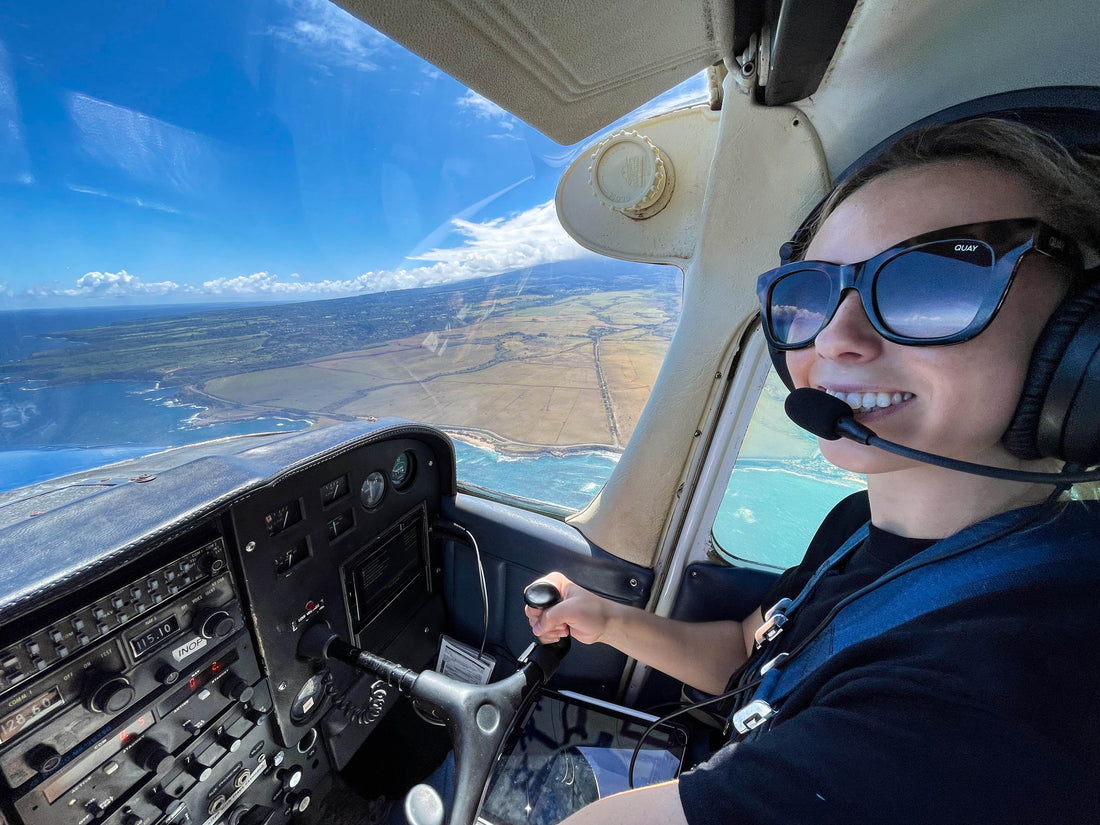
How Long Does It Take to Become a Flight Instructor?
By Leslie Caubble, CFI/IGI
A Certificated Flight Instructor (CFI) is someone who has been trained by an instructor to teach other people how to fly. The Flight Instructor checkride is generally one of the hardest checkrides to pass, so future CFIs ensure their training is thorough and complete before scheduling their checkride.
The flight instructor has a huge responsibility of training the next generation of pilots, so becoming a CFI can be a daunting process. Someone who wants to teach others how to fly must not only demonstrate proficiency in flight, but also in ground subjects, regulations, endorsements, fundamentals of instruction, and even some human learning psychology.
The answer to the question, “How long does it take to become a flight instructor?” has a similar answer to many questions in aviation: It depends!
What It Takes to Become a Flight Instructor
In this article, we’ll look at some of the pathways to becoming a Certified Flight Instructor, the approach to training each takes, and the approximate timeline to finish. For this discussion, we’ll assume that the pilot has already obtained the Commercial Pilot Certificate (single engine), which requires 250 hours of total time under Part 61 training and 190 hours under Part 141.
Also, the pilot has successfully passed both the Fundamentals of Instruction and Flight Instructor Airplane knowledge exams and completed the required spin recovery training.
The Part 141 Path
If you’re considering attending a Part 141 training program, the pathway to becoming a flight instructor is very straightforward regarding cost and timeline. Generally, pilots will be committed to full-time training, including both ground sessions and flight training in pursuit of the Flight Instructor Certificate.
A Part 141 Flight Instructor Certification Course must follow a FAA-approved training course for that school, and the pilot must meet the minimum requirements, plus any stage checks and end-of-course testing. For an initial CFI certificate, the course must include a minimum of 40 hours of ground training in aeronautical knowledge areas and 25 hours in an airplane.
The cost will usually be included in your overall package price for the Part 141 program.
Approx time to CFI: 2-3 months
The Part 61 Path: Accelerated Course
Pilots training to become a CFI under Part 61 do not have a specific number of ground and flight hours to be endorsed for the checkride but must receive and log ground training for the areas listed in FAR 61.185 and show flight proficiency in the areas listed under FAR 61.187.
There are multiple flight schools available that solely focus on flight instructor training or offer an accelerated training curriculum. Usually, the prerequisite for enrolling in one of these programs is to have already passed both knowledge exams, spin endorsement, and have lesson plans already prepared. These programs may also send study guides, online course content, and required ground study resources to be reviewed before beginning the course.
Be prepared to fully devote your schedule to training in an accelerated course. When not in the classroom or aircraft, significant self-study time will be needed to be successful in such a short amount of time.
Some programs have options for packages and pricing depending on whether it’s only a fully immersive ground course or if there is a right-seat flight training course as well. This format works best for self-motivated learners who want to become a flight instructor as quickly as possible.
Approx time to CFI: 1-3 weeks
The Part 61 Path: Flight School Guided Training
The last two pathways we’ll cover are the more traditional Part 61 flight school approaches to flight instructor training. Most smaller, “mom and pop” flight schools will offer training for the Flight Instructor Certificate. Some schools have a more formalized approach, covering ground topics through a syllabus. Flight training includes transitioning to the right seat, performing maneuvers to commercial standards, and learning to teach the maneuvers while performing them.
Ground and flight lessons are scheduled as you would for any other training to this point, but the training will be heavier on the aeronautical knowledge topics. Some schools utilize group ground sessions for CFI applicants, which is a fantastic tool!
The timeline and cost to become a Flight Instructor with this approach vary depending on self-study at home and consistency with lessons.
Approx time to CFI: 2-6 months
The Part 61 Path: Self-Study
There is a way to save a lot of money and work through the CFI training timeline on your own time, but this pathway is best suited, in my experience, for the learner who is self-driven, disciplined, and loves a good deep dive into the regulations and FAA resources. At this point in training, a pilot should already know how to use the ACS, so the self-study learner will learn it inside and out as well as know exactly what FAA references to use along the way.
Lesson plans will need to be written, and many on this path will choose to take the time to write lesson plans from scratch, both for the Private and Commercial Pilot. Another option is pre-made lesson plans that can be purchased online.
Writing lesson plans yourself is most beneficial in the long run for checkride success on the first attempt, but not many people have the time to invest in that project. Another option is to purchase pre-made lesson plans that can be customized with your own notes within the document. Backseat Pilot offers this option, and many CFI applicants use it. Study groups are also a great way to compare notes, lesson ideas, and practice teaching one another.
Pilots at this stage also know what’s required of them in flight, so flying consistently from the right seat, practicing maneuvers, performance takeoffs and landings, and teaching through each of them can be done on the pilot’s own time without paying a CFI to be on board. Asking a family member or friend to ride along while you practice teaching and talking through maneuvers is excellent preparation!
The self-study pathway is totally doable if the pilot takes a systematic and disciplined approach, constantly practices teaching out loud, and continues to get more and more proficient and comfortable in the right seat. Once you’re comfortable teaching the material, know the Fundamentals of Instruction, flying and talking through your actions from the right seat, and feel confident in your knowledge of regulations and endorsements, it’s time to get with your flight instructor for final training and evaluation.
If you truly self-prepared, you should have to spend minimal hours on the ground and in the aircraft with your CFI to get signed off for the checkride.
Approx time to CFI: 2-6 months
Final Thoughts on How to Become a Flight Instructor
Every pilot has their own strengths, weaknesses, and challenges. Some people have a hard time grasping the Fundamentals of Instruction concepts, but their transition to flying from the right seat happens quickly. Others have a natural ability to teach, but flying to standards from the right seat might take longer than average.
Your flight school or CFI is there to guide, evaluate, and help you fill in the gaps along the way. Training to become a flight instructor is 90% ground study and self-study, in my experience. Hold yourself accountable, stay organized and consistent in your ground time, and it will make your Flight Instructor training fly by!
By Leslie Caubble, CFI/IGI
Northstar Aviation References brings you the Pre-Tabbed ASA FAR/AIM, DIY tabs for your FAR/AIM and other pilot resources so that you can more easily study the regulations that form the foundation of your flying career or hobby. Have any questions? Check out our FAQs page or contact us. Check out other blog posts here.
